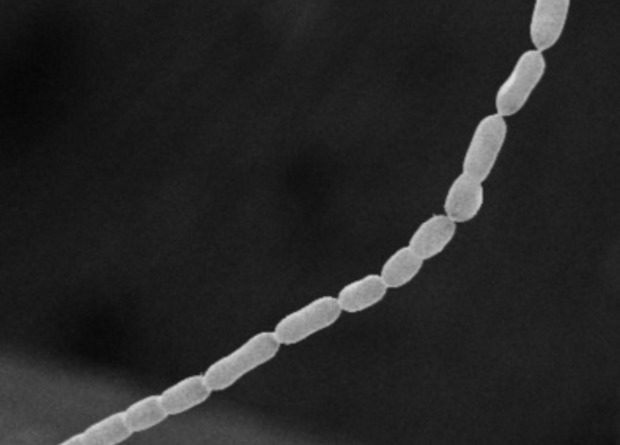
American and French biologists have described a new species of bacteria that they found in mangrove forests. The bacterium, called Thiomargarita magnifica, can reach two centimeters in length and has a genome of 11 million nucleotide pairs. In addition, it does not fit the strict definition of prokaryotes – its DNA is separated from the rest of the cell’s contents by a membrane. A preprint describing the new bacterial species is available on bioRxiv.
As prokaryotes, bacteria possess DNA that floats freely in the cytoplasm, while eukaryotes have genetic material isolated from the rest of the cell contents. This is one of the main characteristics that distinguishes prokaryotes from eukaryotes. But biologists from the United States and France have described a bacterium that does not fall under the strict definition of prokaryotes.
A team of researchers led by Shailesh Date (Shailesh V Date) from the Laboratory for the Study of Complex Systems found a previously undescribed bacterium in the mangrove forests of Guadeloupe, which is located in the Caribbean Sea. Scientists did not immediately realize it was a bacterium, as it was shaped like filaments visible to the naked eye. At first, the scientists thought that these filaments were conglomerates of cells, but after a close examination, they realized that they had one long cell in front of them.
Not only was the bacterium unusually large (an average of a centimeter, but it could reach two), but it also had a structure uncharacteristic of prokaryotes: the cell was divided into two sacs. One contained DNA and ribosomes, and the second was filled with water. It is this water pouch that most likely allows the bacteria to grow to such a large size. In addition, the described bacterium had a very long genome – 11 million nucleotide pairs with 11,000 genes. Usually the bacterial genome does not exceed 4 million nucleotide pairs and 4,000 genes.
The bacterium was named Thiomargarita magnifica
The bacterium described was named Thiomargarita magnifica and was included in the same genus as Thiomargarita namibiensis, which was discovered in the late 1990s. The latter can grow to almost 1 centimeter in length and most of its cells are also filled with a giant vacuole containing water and nitrates.
The authors of the preprint believe that T. magnifica may force scientists to reconsider the characteristics that separate prokaryotes and eukaryotes. According to them, the bacterium described destroys the notion of prokaryotes as “tiny, simple and undeveloped life forms – pouches with proteins inside.”
A year ago, we told you how biologists brought back previously unknown species of bacteria from the International Space Station. They were in samples taken from the astronauts’ dining table, the rack on which the material science experiments were conducted, and from the module from which the activities aboard the ISS were observed.




